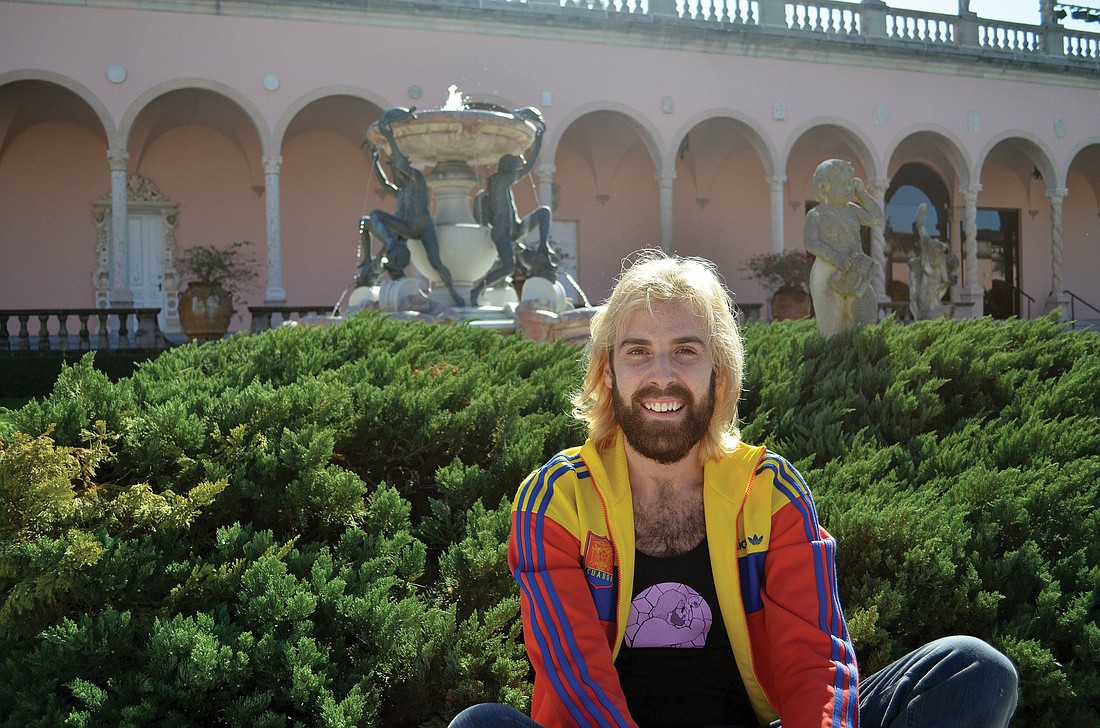- April 19, 2024
-
-
Loading

Loading

Nathan Wilson was in dire need of inspiration his junior year at the New College of Florida. Wilson had studied the physical and natural wonders of the world since childhood. However, by the time he reached his junior year, the science aficionado realized he had reached his limit for the rigidity of formal, lab-based science research.
“I wasn’t able to take chemistry, physics and biology to the professional level,” says Wilson. “I grew uncomfortable in a formalized lab space and found a comfortable home in the sculpture studio.”
Fortunately for Wilson, he was also in need of extra class hours to fulfill his bachelor’s degree requirements. So, he randomly decided to take a general sculpture course. That decision led him to become an artist of science.
Wilson started by sculpting forms familiar to him — the shapes and fixtures from his science courses.
His work is a stylized representation of structures that occur realistically and theoretically in nature. Each detail and measurement of the piece is key for its structural integrity.
“For me, it all came together with a protractor, ruler and a pencil,” says Wilson. “Recursion became a big part of my process, repeating the same series of steps and patterns. That’s what led to one of my first pieces that was geometrically informed.”
His science-centric artwork will sit adjacent to more traditional sculptures of human forms at the John and Mable Ringling Museum of Art’s Ringling Underground event Thursday. It is the event’s first installment of the year.
Wilson’s pieces on display, such as “Close Quarters,” “Living Lattice” and “Method Man” are geometrical works that require intimate knowledge of crystalized polygons, which seem to have an infinite amount of sides and details. His first piece was a truncated octahedron, which has 14 faces and 36 individual edges.
However, bridging the gap between the science and arts departments at New College carried its own unexpected challenges.
“The scientists loved what I was doing,” says Wilson. “I was able to display and explore crystals and shapes in a new way. But the artists were a dead audience. My work divorces from the usual way of things in art with pieces coming from your imagination instead of science, I suppose.”
And after writing a 100-page thesis for his general studies degree based on the uses of the crystalline structures he features in his art, Wilson saw another purpose for his artwork beyond admiration: He plans to use geometric construction and design to help build solid structures for the homeless. It’s clear this artist is still a scientist at heart.
“My ‘Close Quarters’ piece is constructed with cardboard by the rules of geodesic augmentation,” says Wilson. “And in this way it’s the strongest and most efficient per-pound technique of construction. They are bound by equal weight from other elements — or, in this case, individual triangle pieces of cardboard — and make the overall structure extremely strong.”
IF YOU GO
Ringling Underground
When: 8 to 11 p.m. Thursday, Feb. 5
Where: John and Mable Ringling Museum of Art, 5401 Bay Shore Road
Tickets: $10 for adults and seniors 65 and older; $5 for children 6 to 17; free for students with college ID
Info: Call 359-5700 or visit ringling.org